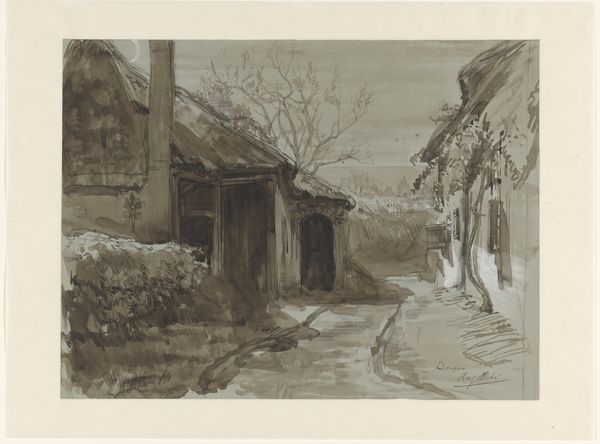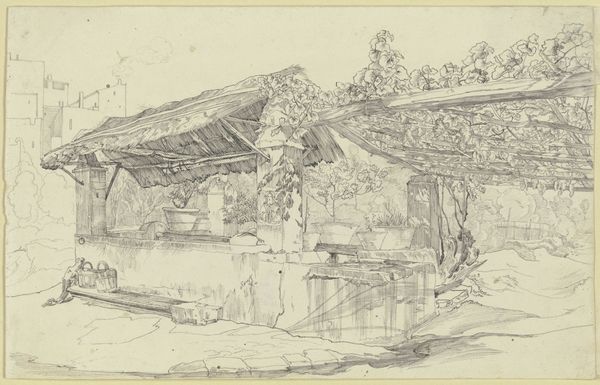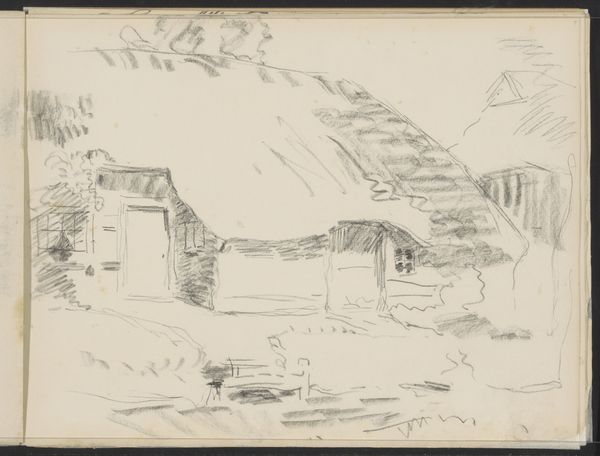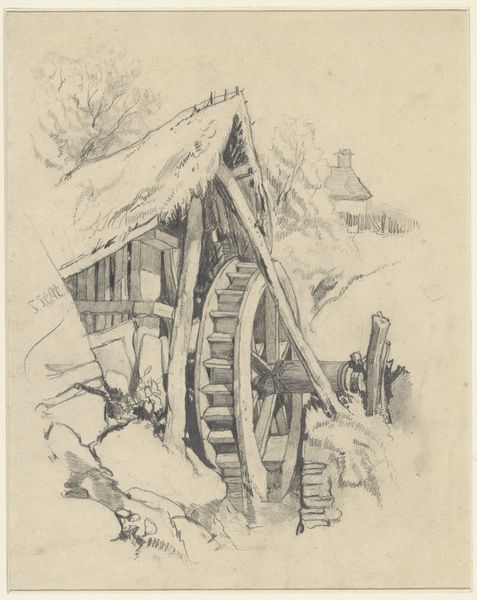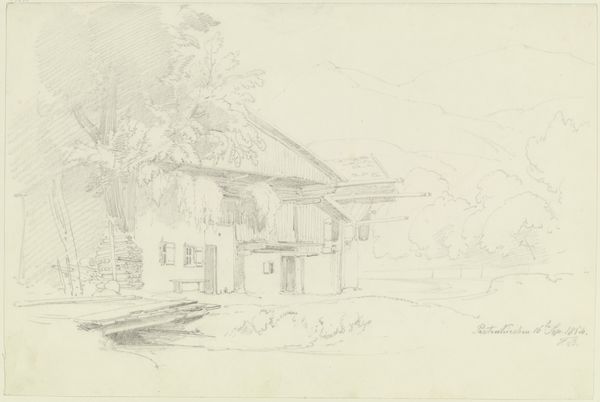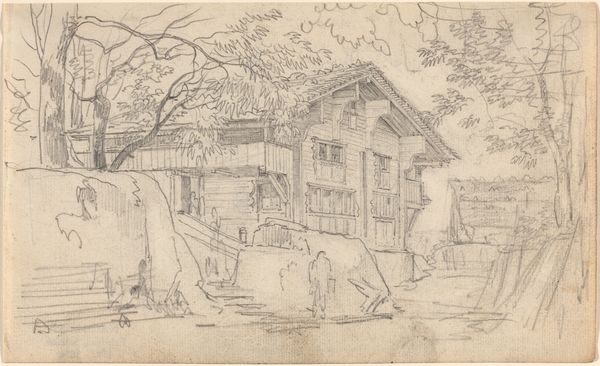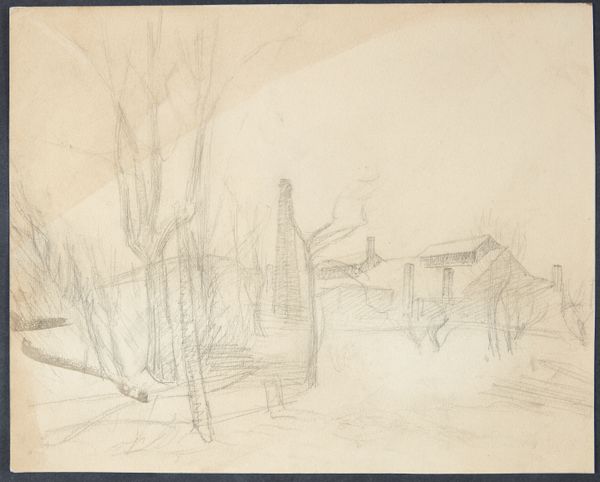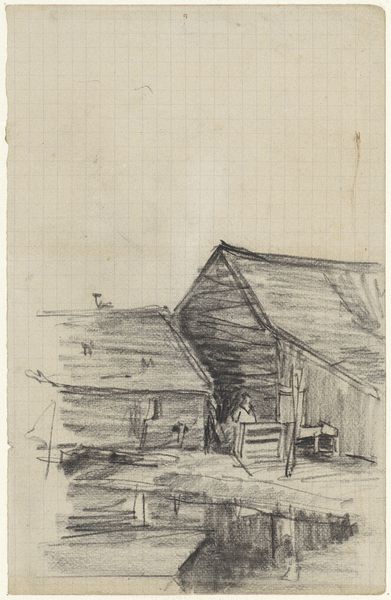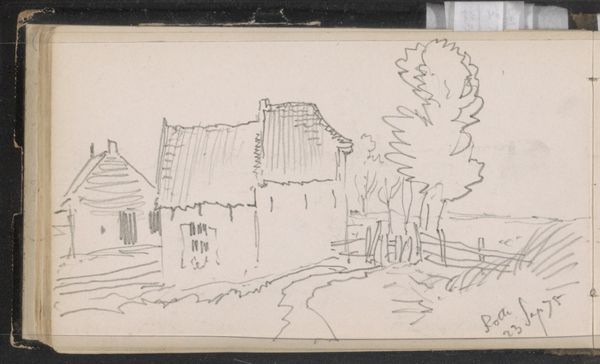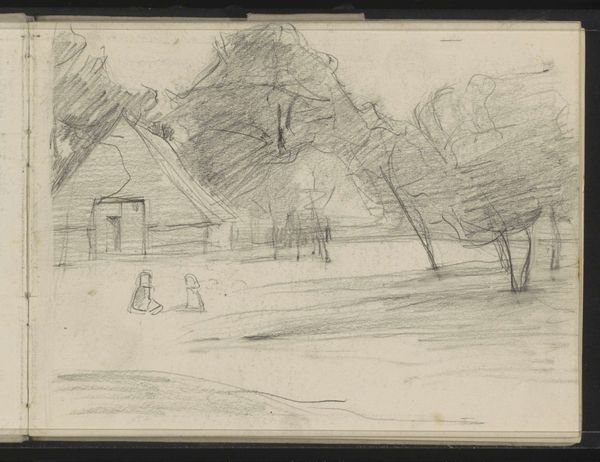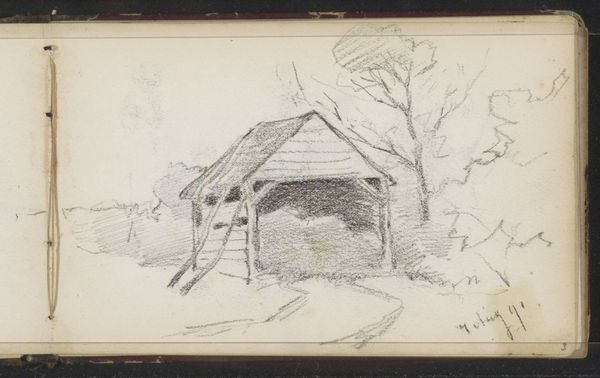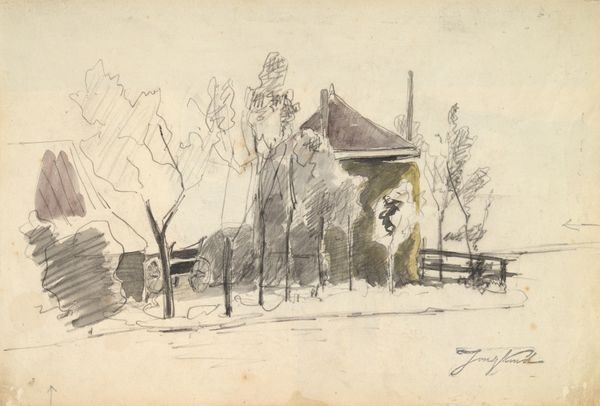
drawing, paper, ink
#
drawing
#
dutch-golden-age
#
landscape
#
etching
#
paper
#
ink
#
watercolour illustration
#
genre-painting
#
realism
Dimensions: height 324 mm, width 491 mm
Copyright: Rijks Museum: Open Domain
Editor: Here we have "Huizen te Dongen" by August Allebé, created sometime between 1848 and 1907. It's an ink and watercolour drawing on paper. I find the monochrome palette quite striking, lending the scene a muted, almost dreamlike quality. What stands out to you in terms of its composition? Curator: The immediate point of interest lies in the artist's management of depth through tonal variation. Observe how the foreground structures are rendered with a greater density of ink, a marked contrast to the ethereal quality of the buildings further removed. This recession is not merely representational; it's a deliberate structuring of the viewer's gaze. Notice the thatched structure – how would you describe its role within the overall arrangement? Editor: I see it as a kind of anchor, something solid in the midst of the softer, hazier shapes. It draws the eye and holds it there. Does the simplicity of the line work play a part in the viewing experience? Curator: Absolutely. The reductive quality of line, especially in the trees, avoids meticulous detail. Instead, we find a structural economy, foregrounding form over mimetic representation. Ask yourself how that reduction influences the affect produced by the work. Editor: It makes it feel more immediate, more like a fleeting impression than a precise record. I guess it pulls focus to the basics like contrast and form, like you mentioned. Thanks! I'm glad I looked closer. Curator: Precisely. Paying attention to such internal formal dynamics of Allebé's work illuminates an aesthetic engagement beyond mere replication of observed reality. It underlines the artist’s active construction of the visible world, wouldn't you agree?
Comments
No comments
Be the first to comment and join the conversation on the ultimate creative platform.
